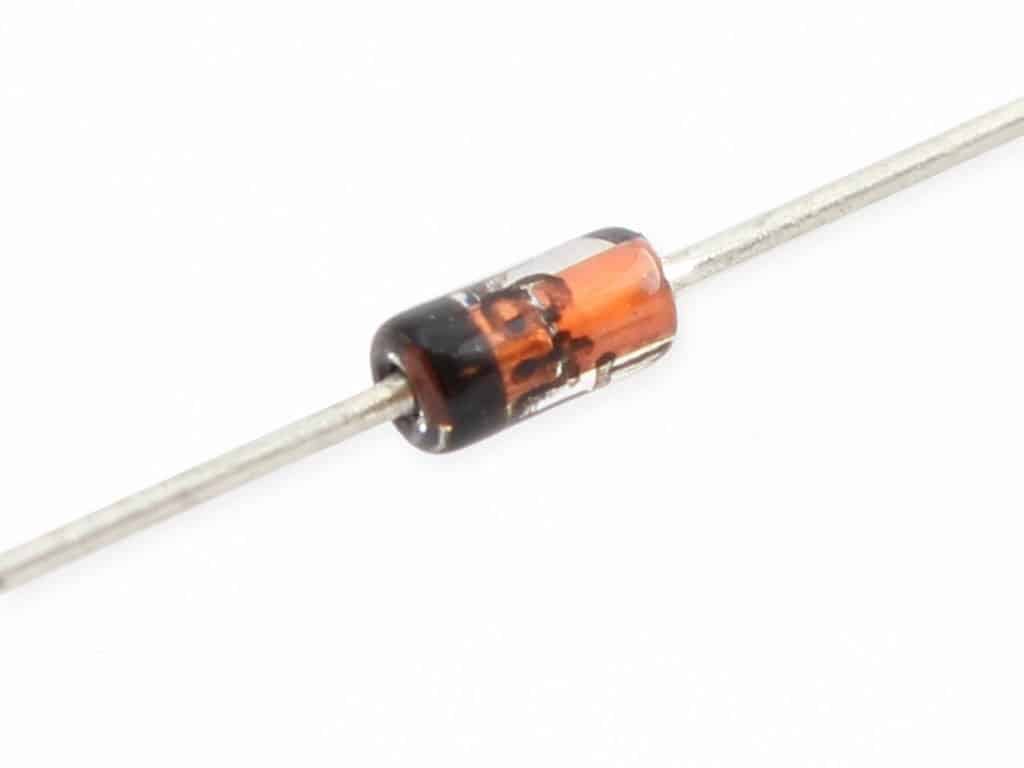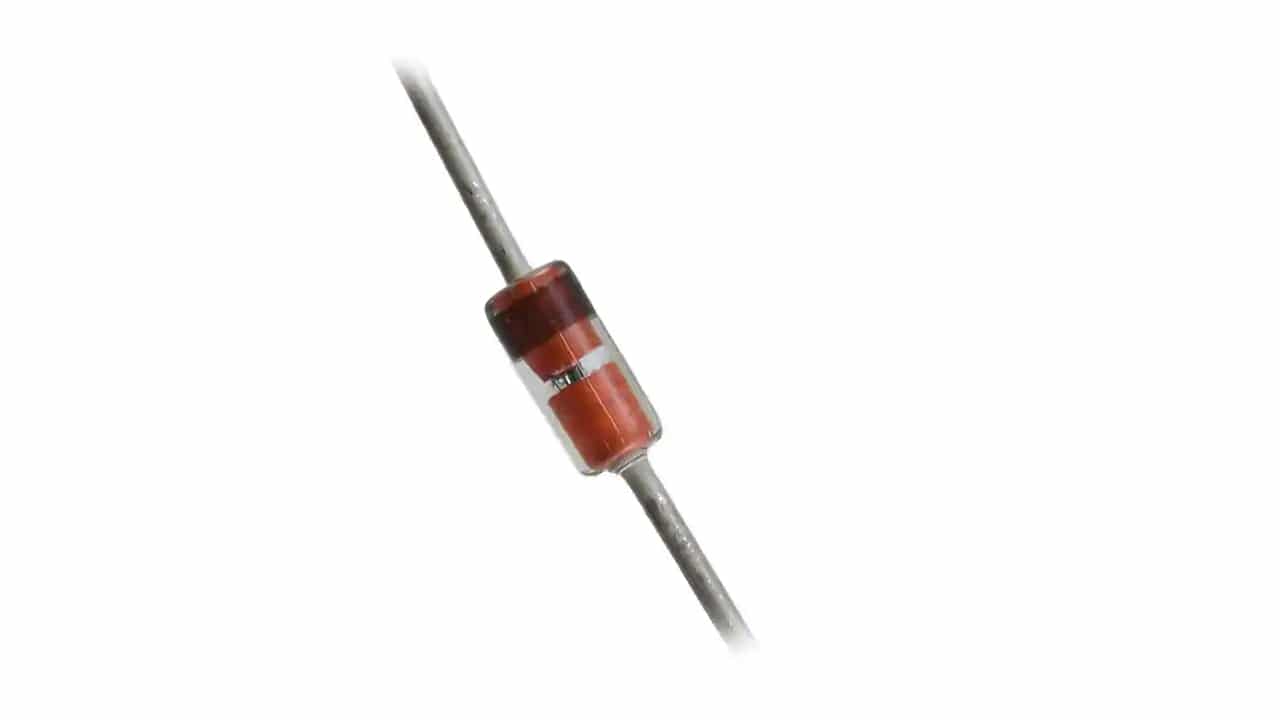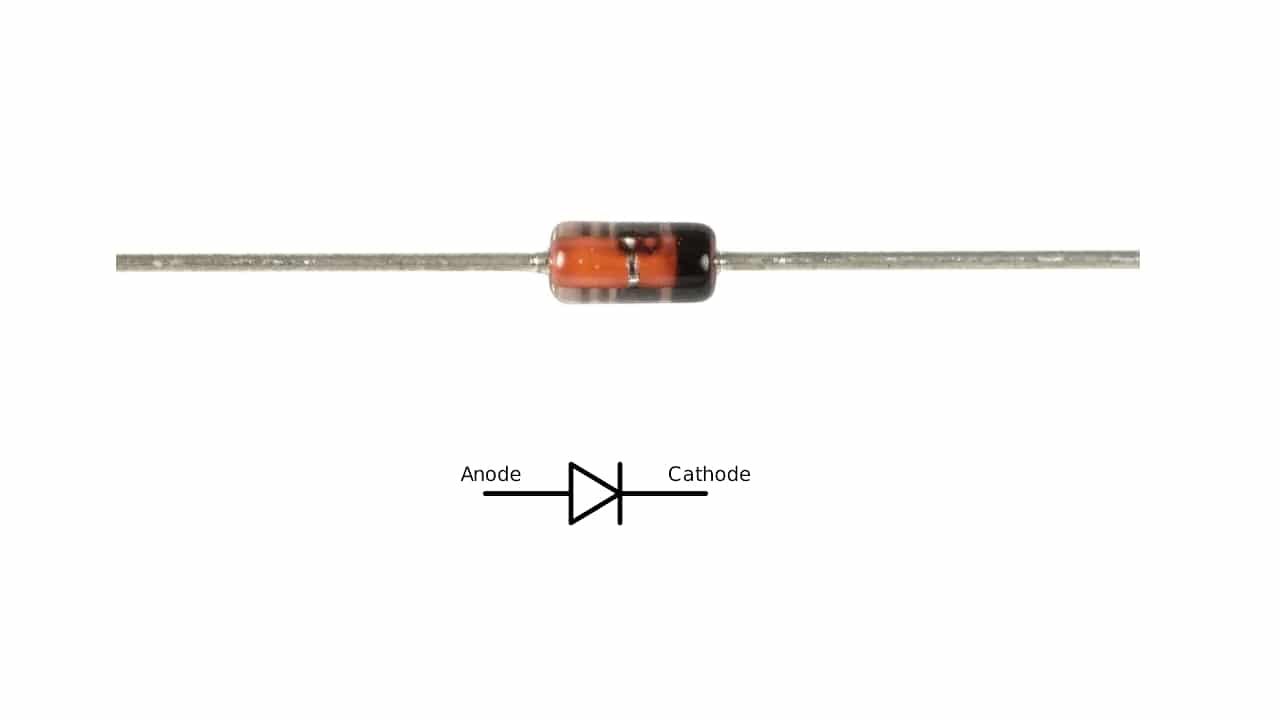
There are many types of semiconductor diodes, with very diverse applications. From the rectifier diodes, through the Zener, to the LEDs that emit light. In this article we are interested an electronic component concrete, the 1n4148 general purpose diode. It will be the one that we analyze in terms of its characteristics and we will show some of the possible applications.
The 1n4148 is a small silicon unit that hides great secrets that you should know. A component that can contribute a lot to your projects if you like electronic DIY or are a maker ...
What is a semiconductor diode?
Un diode is a semiconductor device It acts as a solid-state switch and one-way for current. Although there are exceptions, such as the LED or IR diode, which emit an electromagnetic wave. In the first case, a visible light of some color, or infrared radiation. On the other hand, in this article, since we will talk about 1n4148, we are only interested in those that act as current disruptors.
The word diode comes from the Greek, and means "two ways". Despite this, what it does is precisely the opposite, that is, it blocks the flow of current to the other direction. However, if the characteristic IV curve of the diode is appreciated, it can be seen that it consists of two differentiated regions. Below a certain potential difference it will behave like an open circuit (not conducting), and above it like a short circuit with very little electrical resistance.
These diodes have a union of two types of semiconductor P and N. And they also have two connection terminals, an anode (positive terminal) and a cathode (negative terminal). Depending on the way in which the current is applied, two configurations can be differentiated:
- Direct polarization: when the current flow passes. The negative pole of the battery or power supply repels the free electrons from the N crystal and the electrons are directed towards the PN junction. The positive pole of the battery or source attracts the valence electrons from the P crystal (pushes the holes towards the PN junction). When the potential difference between the terminals is greater than the potential difference of the space charge zone, the free electrons in the N crystal acquire enough energy to jump into the holes in the P crystal and current flows.
- Reverse polarization: when it acts as an insulator and does not allow current to flow. In this case, the polarization will be the opposite, that is, the source will be supplying in the opposite direction, causing the current of electrons to enter through the P zone and push the electrons into the eggs. The positive terminal of the battery will attract the electrons from the N zone, and this will generate a strip that will act as an insulator between the junctions.
These components were created based on the principle of the Lee De Forest experiments. The first to appear were large vacuum valves or vacuum tubes. Thermionic glass ampoules with a series of electrodes that served as these devices, but emitted a lot of heat, consumed a lot, were large, and could be damaged like light bulbs. So it was decided to replace it with solid state components (semiconductors).
Applications
Diodes, such as 1n4148, have multitude of applications. They are very popular devices in direct current electronic circuits and also in some alternating current ones. In fact, we already saw how in the power supplies they fulfilled a very important task when going from AC to DC. That is their aspect as rectifiers, since they change a sinusoidal current signal for a continuous one in the form of pulses by blocking the current in the opposite direction.
They can also function as electrically controlled switches, as circuit protectors, as noise generators, etc.
Diode types
Diodes can be classified according to the voltage they tolerate, the intensity, the material (eg: silicon), and other characteristics. Some of the most important types are:
- Detector diode: they are known as low signal or point contact. They are designed for use with very high frequencies and low currents. You can find them both made of germanium (threshold 0.2 to 0.3 volts) and silicon (threshold 0.6 to 0-7 volts). Depending on the doping of the P and N zones they will have different resistance and decay characteristics.
- Rectifier diode: they drive only in direct poralization, as I have explained before. They are used to transform voltages or rectify signals. You can also find different types, with different tolerances in terms of current and supported voltage.
- Zener diode: is another very popular type. They allow current flow in reverse and are often used as control devices. If they are polarized directly they can behave like a normal diode.
- LED : the light-emitting diode is different from the previous ones, since what it does is transform electrical energy into light. This is so thanks to an electroluminescence process in which holes and electrons recombine to produce this light when it is directly polarized.
- Schottky diodeThey are known as fast recovery or hot carriers. They are usually made of silicon and are characterized by a very small voltage drop (<0.25v approx). That is, the switching time will be very short.
- Schockley diode: Despite the similarity in the name, it is different from the previous one. It has PNPN junctions and has two possible stable states (blocking or high impedance and conducting or low impedance).
- Step Recovery Diode (SRD): it is also known as charge storage, and has the ability to store a charge of the positive pulse and use the negative pulse of the sinusoidal signals.
- Tunnel diode: Also called as Esaki, they are used as high speed solid state switches as they can work in nanoseconds. That's because of an extremely thin depletion zone and a curve where the negative resistance region decreases as the voltage increases.
- Varactor diode: it is less known than the previous ones, but it is also used in some projects. The varicap is used as a voltage controlled variable capacitor. It operates inversely.
- Laser and IR photodiode: They are diodes similar to LEDs, but instead of emitting light, they emit a very specific electromagnetic wave. As it can be a monochromatic light (laser) or an infrared (IR).
- Transient Voltage Suppression Diode (TVS)- It is designed to bypass or deflect voltage spikes and protect circuits from this problem. They can also protect against electrostatic discharge (ESD).
- Gold-doped diodes: they are diodes that are doped using gold atoms. That gives them an advantage, and that is that they have a much faster response.
- Peltier diode: this type of cells allows a union capable of generating heat and cooling depending on which side. More information.
- Avalanche diode: They are similar to the Zener, but they work under another phenomenon known as the avalanche effect.
- Others: there are others such as GUNN, variants of the previous ones such as OLEDs for screens, etc.
1n4148 general purpose diode
El diode 1N4148 It is a kind of standard silicon switching diode. It is one of the most popular used in the world of electronics. It is also very durable, as it has very good specifications despite its low cost.
The name follows the JEDEC nomenclature, and is very useful for switching applications up to approximately 100 Mhz frequencies with a reverse recovery time that does not usually exceed 4ns.
History
Texas Instruments created in 1960 the diode 1n914. After its registration a year later, more than a dozen manufacturers acquired the rights to it to manufacture it. In 1968 the 1N4148 would arrive at the JEDEC registry, beginning to be used in military and industrial applications at the time. At present there are many who produce and sell these devices both under the name 1N4148 and under the 1N914. The differences between the two is practically the name and little else. They only differ in their leakage current specification.
Pinout and packaging of the 1n4148
1n4148 diode usually comes packaged under DO-35, with an axial glass envelope. You can also find it in other formats such as SOD for surface mounting, etc.
As to Pinout, it only has two pins or terminals. If you look at the black stripe on this diode, the end closest to that black stripe will be the cathode, while the other end will be the anode.
More information - datasheet
Specifications
As for the specs from 1n4148, they are usually:
- Maximum forward voltage: 1v to 10mA
- Minimum breakdown voltage and reverse leakage current: 75v at 5 μA; 100 V at 100 μA
- Maximum reverse recovery time: 4ns
- Maximum power dissipation: 500mW
Where to buy a 1n4148
If you wish to buy a 1n4148 diode You should know that it is a very cheap device, and you can find it in specialized electronics stores or on the internet in surfaces such as Amazon. For example, here are some recommendations:
- Briefcase with an assortment of 300 diodes, including 1n4148
- 25 units of 1n4148 rectifier diode
- 50-pack of 1n4148


